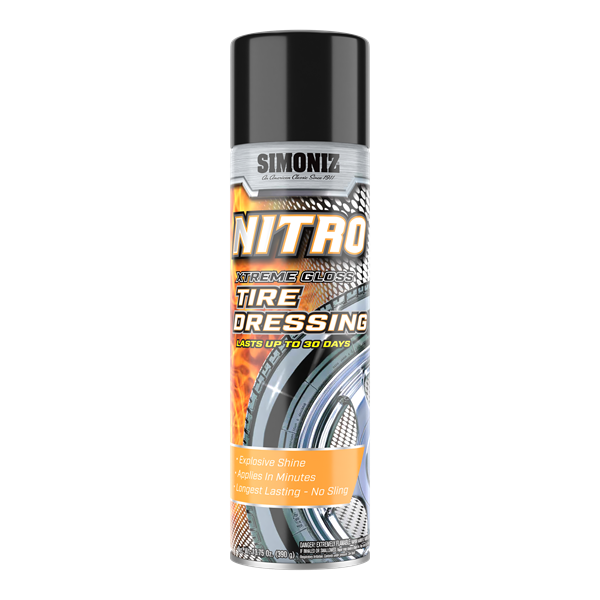Blog Menu
Posted by William Russell on
Tire shine and tire dressings are an essential touch to the detailing process. The final touch that can take a car from pretty good to pretty damn perfect. Even a slightly dirty car with perfect wheels and tires can make a dramatic difference. Some people like their tire's glossy, some like it satin, and some even like them matte. But why do some dressings sling all over the side of the car? Is it because of the actual dressing being poor quality, or is it actually the technique? Tire shine slings because you are applying incorrectly and I am going to show you the basics of applying tire dressing below.
| Pro Tip: Did you know tires turn brown due to mold release agents and this will naturally occur as the tire heats and cools? |
When applying tire dressings, the preparation is key. We need to first removal any prior dressing, mold release waxes, and other oils from the face of the tire. Naturally your tires will brown as the mold release agents come out from the tire. We do not want to use anything too aggressive when removing these agents, we want them, just not at the face of the tire when dressing. To prepare the tire for dressing, we can start with degreasing using a safe and effective degreaser like 3D Yellow Degreaser (featured in the February 2016 Detailers Box).
| Pro Tip: If excessive tire shine remains, use a safe solvent like Tarminator or CarPro Tar-X on a towel. Spray Tarminator onto the towel and scrub into the tire. Repeat to remove the dressing and follow by degreaser. Do not apply solvent direct to tire. |
We recommend applying tire dressing to a clean, cool, and dry tire.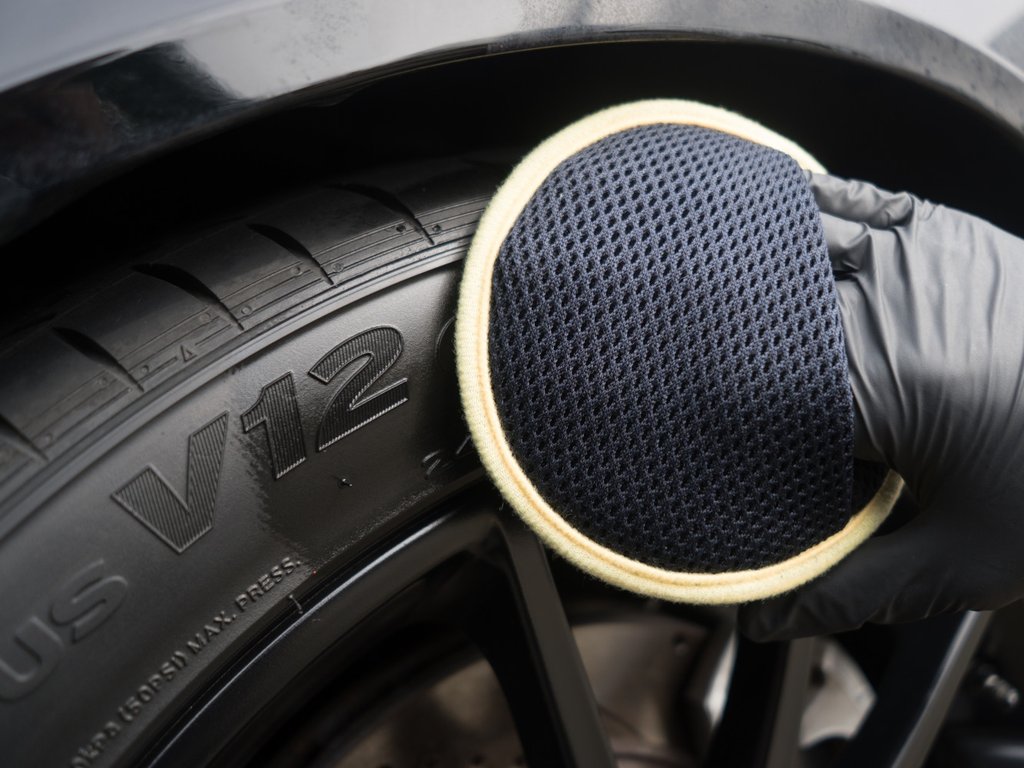 After following the above preparation, choose your favorite tire dressing. Lately we have been working with Royal Detail Club Nero, which was featured in the February detailer's box. The dressing is easy to apply, looks satin when dry, doesn't sling, and lasts a significant amount of time.
After following the above preparation, choose your favorite tire dressing. Lately we have been working with Royal Detail Club Nero, which was featured in the February detailer's box. The dressing is easy to apply, looks satin when dry, doesn't sling, and lasts a significant amount of time.
Apply the dressing to your applicator like this round microfiber applicator. Apply only as much as needed as you work into the tire. I prefer to create a smooth line around the edge of the tire that looks clean when showing the completed detail to customers. Work around the entire tire then move onto the next tire.
It's important to apply evenly right now, but don't worry if excessive dressing is all over the tire. We want this right now. The next step will take care of it and also will prevent the sling.
Setting the tire dressing into the tire itself is crucial to preventing sling.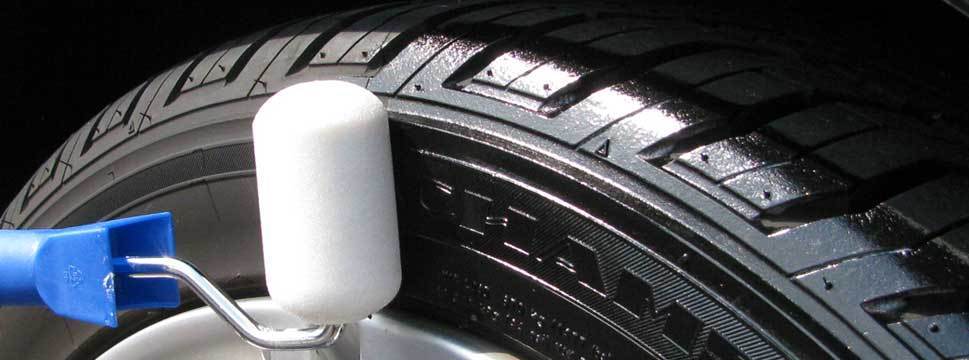 This is the step that leads to sling if not performed. Setting the dressing into the rubber is easy but almost always overlooked. After applying your favorite dressing like Royal Detail Club Nero, let the dressing sit for a few minutes or even more. I generally will dress tires the night before I set them.
This is the step that leads to sling if not performed. Setting the dressing into the rubber is easy but almost always overlooked. After applying your favorite dressing like Royal Detail Club Nero, let the dressing sit for a few minutes or even more. I generally will dress tires the night before I set them.
Setting the dressing is easy. Just take an old microfiber or cotton rag that you plan to throw away. Fold into a small square and rub the towel into the tire. This removes the excess dressing and works the remaining dressing into the tire. Setting the dressing will prevent any chance of sling and you can then send the car out on it's way after the detail.
As you can see from the picture above. The tire looks slick, satin, and glossy. But it doesn't look wet, and won't sling any excess dressing. This car is ready to be picked up and will stay sling-free for the remainder of the life of the dressing.
Conclusion and Key Points
By Shawn Furman
Last Updated August 30, 2021
Tire sling is when tire shine or dressing, applied to the tires of a vehicle, gets flung onto the side, fenders, and even wheels of the vehicle because of the spinning of the tires.
Tire sling most often occurs because of improper tire dressing application, though many people place the blame on the inadequacy of the product itself.
Tire dressing is a detailing product, sometimes called tire shine that is applied to the tires of a vehicle to make them appear shiny and clean.
In most cases, it is the last step to be completed when detailing a vehicle. Though it is not essential, and as clean as tires can get, tire dressing gives them a shine that even soap or other cleaners cannot match.
Just like any other vehicle cleaning solution and process, tire dressing must be applied according to the instructions with which it comes; otherwise, tire sling could result and undo a large portion of your detailing job.
Even if you are not as concerned with detailing your vehicle occasionally, knowing how to prevent tire sling when you do detail it or when someone else does can save your potentially expensive and time-consuming detailing job from becoming undone.
For someone who details vehicles often, it becomes more important, especially if you are being paid to do so.
The general process for applying tire shine correctly is fairly consistent across brands, but each manufacturer still may have different formulas and specific nuances for application depending on the product.
Additionally, tire shine is offered in both spray and gel forms, both of which usually require slightly different application processes.
Drying times can also vary from product to product, an important part of preventing tire sling. It is very easy for a wet product that has not soaked into the tire to be thrown as the wheel spins.
Many tire shine products, especially those in gel form come with a foam applicator. It can be easy to use too much gel or try to use every bit that is left on the applicator.
Any excess product left on the tire can cause tire dressing sling. Even spray-on or liquid products can be applied too generously and the same result can occur.
Because of its greater ability to soak into the rubber and its resistance to clumping like thicker gels, many experts recommend liquid dressing as opposed to gel dressing.
Both types of tire dressing have their own benefits and drawbacks, but liquid dressings tend to resist sling potential, given that it is applied correctly.
The proper application of tire shine does not always guarantee tire sling will not occur, but it will greatly reduce the possibility that it will happen.
It is important to observe and practice the entire application process in order to make sure the possibility of tire sling is all but eliminated.
Preparation is the key to success, especially when cleaning any part of a vehicle involved and time can be of the essence. Not only is it important if time constraints are involved, but it can also aid in your concentration levels, allowing you to focus on the task at hand without having to walk away and potentially miss steps.
Material and tool gathering should be the first part of preparation. Since tire dressing is usually part of detailing a car, you may already have most of what you need from what you have done so far.
Tools and materials needed include the tire dressing product, an applicator, and a microfiber cloth. Any towel or applicator should be clean, and gloves are recommended but not necessary. Multiple microfiber cloths are also recommended in case one of the other ones falls or gets dirty.
Even though tire shine might be one of the finishing touches you put on your vehicle detail, the wheels and tires should be the first things to be washed. Both the wheels and tires can and should be cleaned before applying tire shine, even if you do not intend to give your vehicle a complete wash and detail.
Regardless of whether or not you wash your entire vehicle, the wheels and tires should be completely dried before the application of any tire dressing.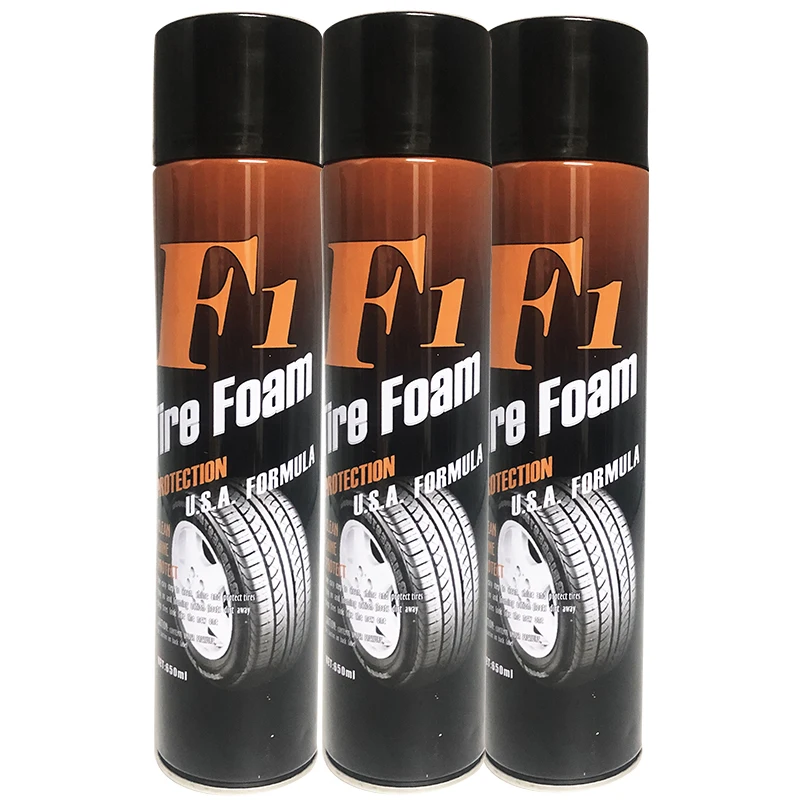 Tire shine should only be applied to the tires of the vehicle any residual water on the wheels could drip onto the tires and re-wet them.
Tire shine should only be applied to the tires of the vehicle any residual water on the wheels could drip onto the tires and re-wet them.
Once the wheels and tires have been dried, you can apply the tire shine. There are usually three different ways to do this: Spray-on, apply with a foam applicator, and wipe-on.
Spray-on dressings come exclusively as liquids. They are beneficial because they are liquid dressings and can be soaked into the tire easily and because they are the easiest to use and apply.
The downside is that they can be messy with the chance of overspray getting onto both the body panels and wheels of the vehicle. They can even be messy at the recommended spraying distance. It is especially important to follow directions for spray-on tire dressings to make sure the least amount of overspray occurs and the desired results are accomplished since many of these products allow for multiple layers if desired. Any spray that gets onto the wheel or body panels should be removed.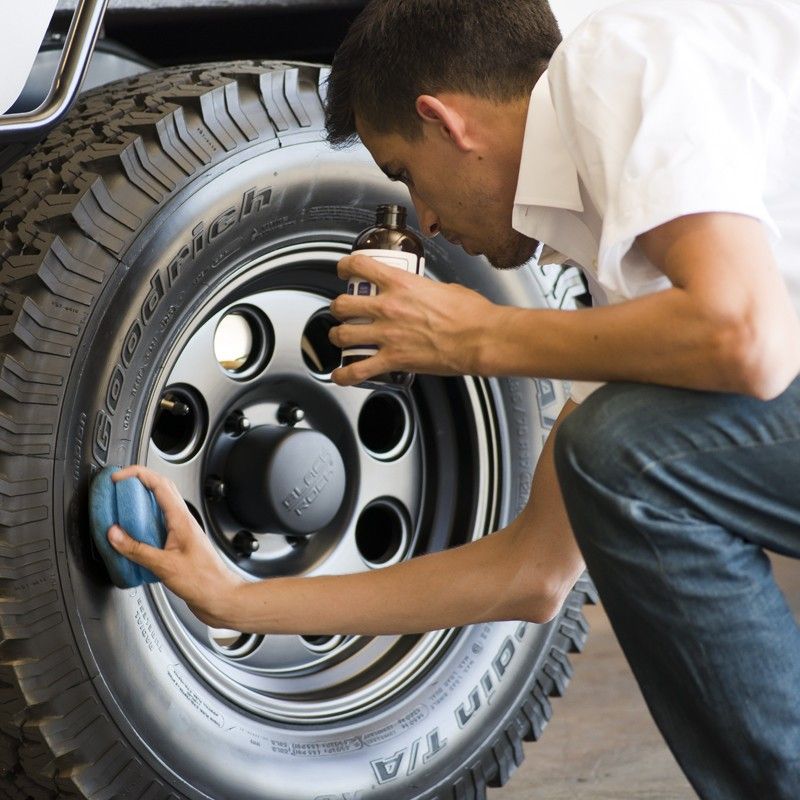
Dressings that come with a foam applicator as part of the package usually include a gel-type dressing. The applicator is usually shaped like a cube and contains a cutout that runs through the middle of one side.
This serves to hold the gel and help spread it over the tire. These types of dressings benefit from the easy application of tire shine with the possibility of only one layer of application to achieve the desired results.
The downside to these types of tire shine is that they can be messy from putting too much gel on the applicator. If too much gel is used on the tire or some drips onto the wheel, it should be removed.
Wipe-on, liquid tire shines are usually considered the best kind by experts. They can be applied precisely with the use of a cloth and soak into the tire faster and better than gels. The possibility of applying too much tire dressing still exists but the potential is greatly diminished.
The final step in the application process is mostly cleanup and drying. Cleaning up any excess material is important to make sure that not only tire sling can be eliminated, but also that other parts of the vehicle are not exposed to the dressing products intended for the tires.
Cleaning up any excess material is important to make sure that not only tire sling can be eliminated, but also that other parts of the vehicle are not exposed to the dressing products intended for the tires.
Drying times vary greatly between products, so it is especially important to read the instructions on each product. Times can range from five minutes to three hours, but erring on the side of caution and waiting longer than recommended can be beneficial.
Tire sling occurs when tire shine is thrown from the tire and onto the body or wheels of a vehicle because of the speed at which the wheels rotate.
This is most often because of improper application of tire dressing rather than a fault in the product. This can be avoided by following the instructions on each tire dressing product and adequately preparing your tools and products, washing and drying your tires, and allowing the tire dressing to adequately dry after proper application.
03/19/2021
Vladimir Astrovskiy, a leading specialist in after-sales service of Volkswagen, a technical coach of the Volkswagen Academy in Belarus for body repair and painting, tells about what will help keep the paintwork of your car in perfect condition for as long as possible.
It is important to understand that the steel sheet is always exposed to corrosion, and coatings only slow down this process. And that the paintwork is not tank armor and is exposed to numerous natural influences every day. We advise our customers to take a number of measures to ensure that the paintwork is reliably protected and retains its properties for as long as possible.
There is a lot of useful information on caring for paintwork: about washing, polishing, preserving the body, as well as important tips for cleaning and drying the interior.
The car needs a full cycle wash with waxing. When washing, you need to take into account the following nuances (for more details, see the on-board literature):
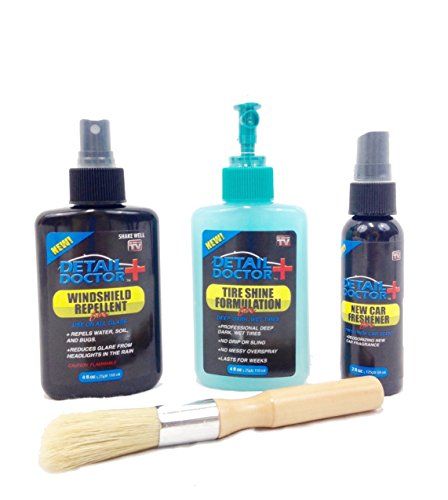 In order for the car to return to normal, you need to dry the brake discs and pads with several braking at low speed.
In order for the car to return to normal, you need to dry the brake discs and pads with several braking at low speed. It is worth treating immediately after you notice that the water has stopped dripping from a clean paintwork in drops. Alloy wheels should be cleaned to remove road salt and brake pad wear approximately every 2 weeks. Once every three months, Volkswagen recommends hard waxing these discs.
Inspection must be carried out in order to detect damage in time.
So that later anti-corrosion treatment is not needed (which, by the way, will cost much more). Scratches and chips are a normal consequence of the movement of your car, we do not move in a vacuum, unfortunately. They need to be painted over immediately. If you can't do it yourself, contact the experts. You can purchase a special chip repair kit from each Volkswagen dealer. It consists of your car's paint (the paint code is in the service book) and a clear coat.
(bird and insect droppings) because they have an extremely aggressive effect on the coating. Tip for difficult cases: Wet the stain first. Never use a sponge containing fiberglass! Caution: if the dirt has dried, in no case do not scrape it off - this will damage the paint; better wet it and wait until the dirt gets wet.
- they secrete a sticky resin. Well, if you still fall into this trap, then immediately apply the appropriate detergent, otherwise cracks may form in the paint. In addition, resin residues can ruin the gloss of the paintwork after polishing.
Are there any bituminous stains on them. If there are, immediately remove them with a non-aggressive degreaser, otherwise the bitumen will leave permanent stains on the paint.
Back to list
Specialists of the "AvtoSpa" center use only the best, repeatedly tested and well-proven car care products from well-known manufacturers.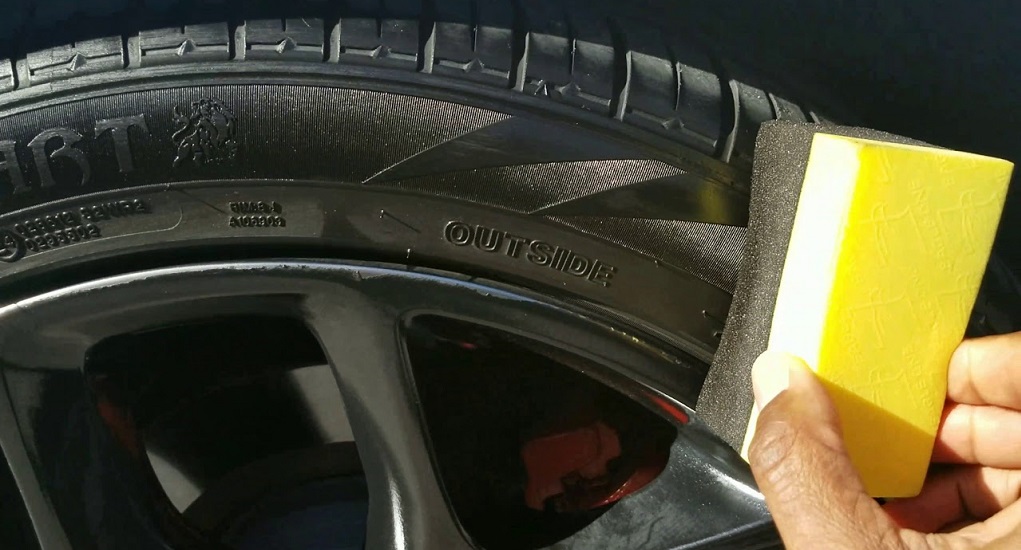 We present to your attention long-term protective coatings:
We present to your attention long-term protective coatings:
Body Glass Guard is a water glass polish from Willson . The polish provides maximum protection for your car body, preserves its color and saturation of shades, gives a bright and deep shine. This composition has an excellent antistatic and water-repellent effect and prevents the appearance of stains on the car body, and a durable film will protect the car body from minor scratches, including mechanical washes, for a long time. You won't need regular polishing because Body Glass Guard polish lasts up to 1 year.
Learn more about "Wody Glass Guard"
Quartz coatings from the "C.Quartz" line - are highly effective means of protecting the paintwork of your car body. "CQUARTZ DLUX" , "ReLoad" and "FINEST" are made using the most modern technologies and can literally transform your car.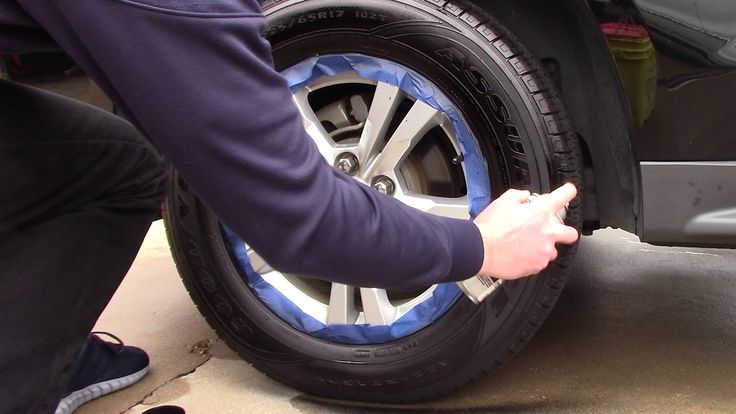 "CQUARTZ DLUX" creates a shiny, transparent layer on the surface, only 1.5-2 microns thick, but lasts a long time! "ReLoad" gives the car a shine and an incomparable water-repellent effect. "Cquartz FINEST" is a new, powerful protective coating for automotive paintwork. Water, dirt and other foreign particles roll off the car - it is attractive and clean ... Always!
"CQUARTZ DLUX" creates a shiny, transparent layer on the surface, only 1.5-2 microns thick, but lasts a long time! "ReLoad" gives the car a shine and an incomparable water-repellent effect. "Cquartz FINEST" is a new, powerful protective coating for automotive paintwork. Water, dirt and other foreign particles roll off the car - it is attractive and clean ... Always!
Learn more about protective quartz coatings from the "C.Quartz" line
Innovation in paint protection! Ceramic coating "Williams" from the company "Ultimotive" (UK). The product was developed in collaboration with the engineers of Williams, one of the leading teams in Formula 1. The technology of the 21st century allows you to protect the paintwork, interior and wheels of the car as much as possible. After washing your car like new! Formula 1 technology is available today. A guarantee for a sheeting of a body - 5 years.